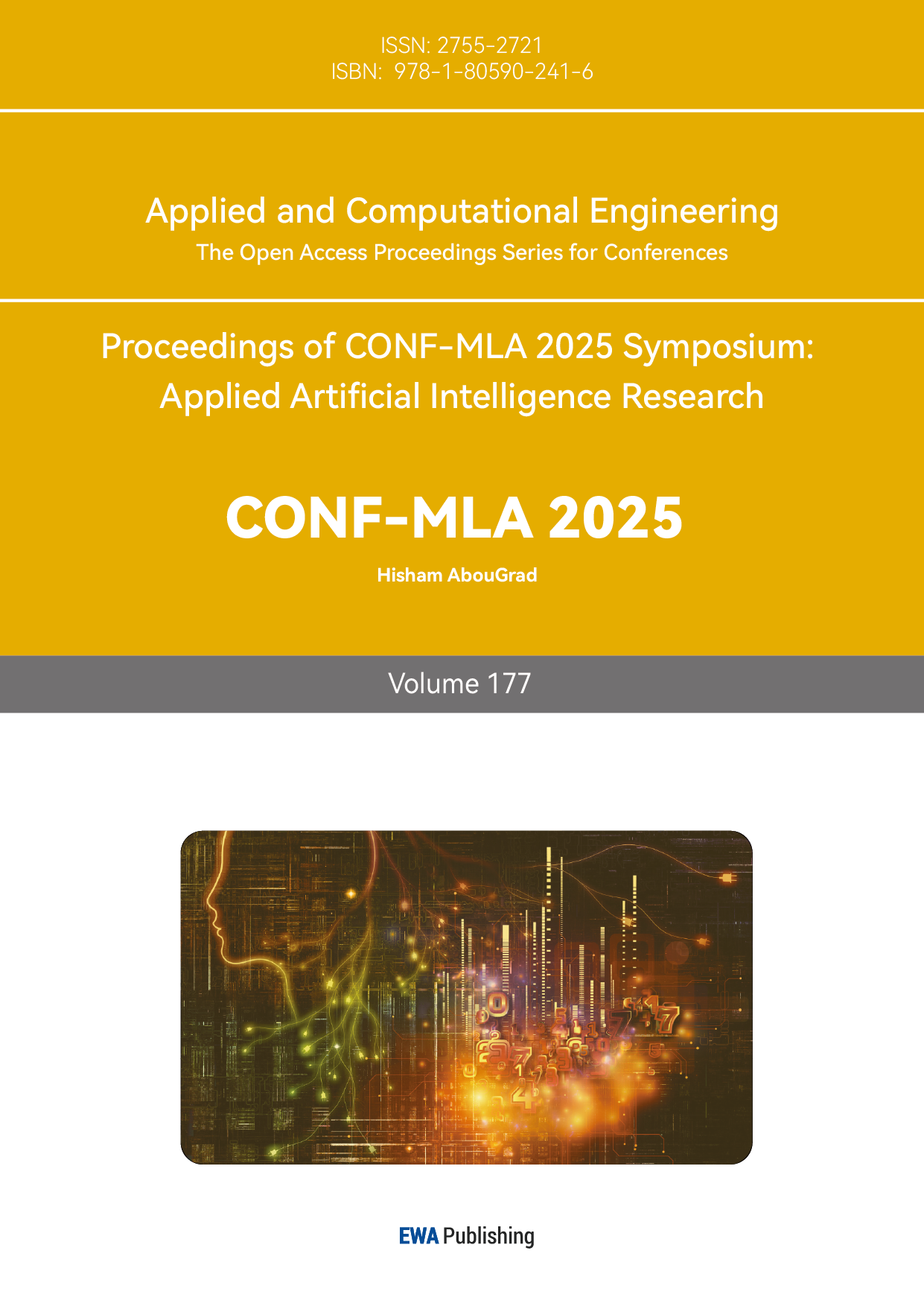References
[1]. Lenz, I., Lee, H., & Saxena, A. (2014). Deep learning for detecting robotic grasps. arXiv: arXiv: 1301.3592. doi: 10.48550/arXiv.1301.3592.
[2]. Na, Y.-H., Jo, H., & Song, J.-B. (2017). Learning to grasp objects based on ensemble learning combining simulation data and real data. In 2017 17th International Conference on Control, Automation and Systems (ICCAS) (pp. 1030–1034). doi: 10.23919/ICCAS.2017.8204368.
[3]. Morrison, D., Corke, P., & Leitner, J. (2018). Closing the loop for robotic grasping: a real-time, generative grasp synthesis approach. arXiv: arXiv: 1804.05172. doi: 10.48550/arXiv.1804.05172.
[4]. Alladkani, F., Akl, J., & Calli, B. (2021). ECNNs: ensemble learning methods for improving planar grasp quality estimation. arXiv: arXiv: 2105.00329. doi: 10.48550/arXiv.2105.00329.
[5]. Chen, Y.-L., Cai, Y.-R., & Cheng, M.-Y. (2023). Vision-based robotic object grasping—a deep reinforcement learning approach. Machines, 11(2), 275. doi: 10.3390/machines11020275.
[6]. Jahanshahi, H., & Zhu, Z. H. (2024). Review of machine learning in robotic grasping control in space application. Acta Astronaut., 220, 37–61. doi: 10.1016/j.actaastro.2024.04.012.
[7]. Du, G., Wang, K., Lian, S., & Zhao, K. (2021). Vision-based robotic grasping from object localization, object pose estimation to grasp estimation for parallel grippers: a review. Artif. Intell. Rev., 54(3), 1677–1734. doi: 10.1007/s10462-020-09888-5.
[8]. Glover, J., Rus, D., & Roy, N. (2008). Probabilistic models of object geometry for grasp planning. In Robotics: Science and Systems IV. Robotics: Science and Systems Foundation. doi: 10.15607/RSS.2008.IV.036.
[9]. Li, X. Q., & Chen, Y. (2025). A method for predicting the grasping pose of a robotic arm in a cluttered scene. Mechanical & Electrical Engineering, 1–8.
[10]. Kumra, S., & Kanan, C. (2017). Robotic grasp detection using deep convolutional neural networks. In 2017 IEEE/RSJ International Conference on Intelligent Robots and Systems (IROS) (pp. 769–776). doi: 10.1109/IROS.2017.8202237.
[11]. Ronneberger, O., Fischer, P., & Brox, T. (2015). U-net: convolutional networks for biomedical image segmentation. arXiv: arXiv: 1505.04597. doi: 10.48550/arXiv.1505.04597.
[12]. Zeng, Z., Xie, W., Zhang, Y., & Lu, Y. (2019). RIC-unet: an improved neural network based on unet for nuclei segmentation in histology images. IEEE Access, 7, 21420–21428. doi: 10.1109/ACCESS.2019.2896920.
[13]. Fu, K., & Dang, X. (2024). Light-weight convolutional neural networks for generative robotic grasping. IEEE Trans. Ind. Informat., 20(4), 6696–6707. doi: 10.1109/TII.2024.3353841.
[14]. O’Shea, K., & Nash, R. (2015). An Introduction to Convolutional Neural Networks. arXiv: arXiv: 1511.08458. doi: 10.48550/arXiv.1511.08458.
[15]. Zuo, S. W. (2023). Research on key technologies of robotic arm grasping based on deep learning and RGB-D data. Master’s thesis, Chang’an University.
[16]. Wei, Y. H., Chen, Y. C., & Gu, X. J. (2024). Fault diagnosis based on SincNet network combined with L2 regularization. Modular Machine Tool & Automatic Manufacturing Technique, 8, 158–162. doi: 10.13462/j.cnki.mmtamt.2024.08.031.
[17]. Cortes, C., Mohri, M., & Rostamizadeh, A. (2012). L2 regularization for learning kernels. arXiv: arXiv: 1205.2653. doi: 10.48550/arXiv.1205.2653.



